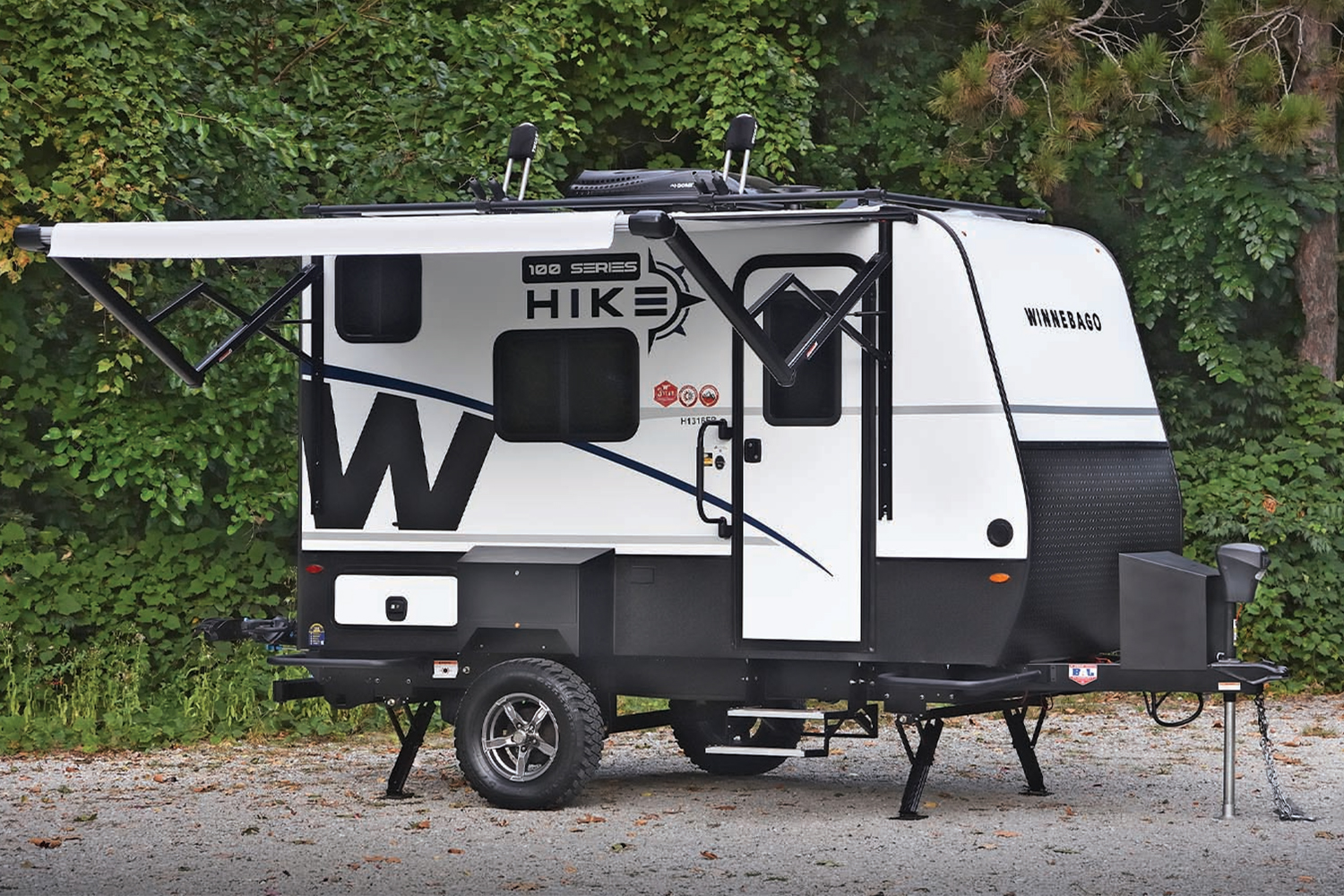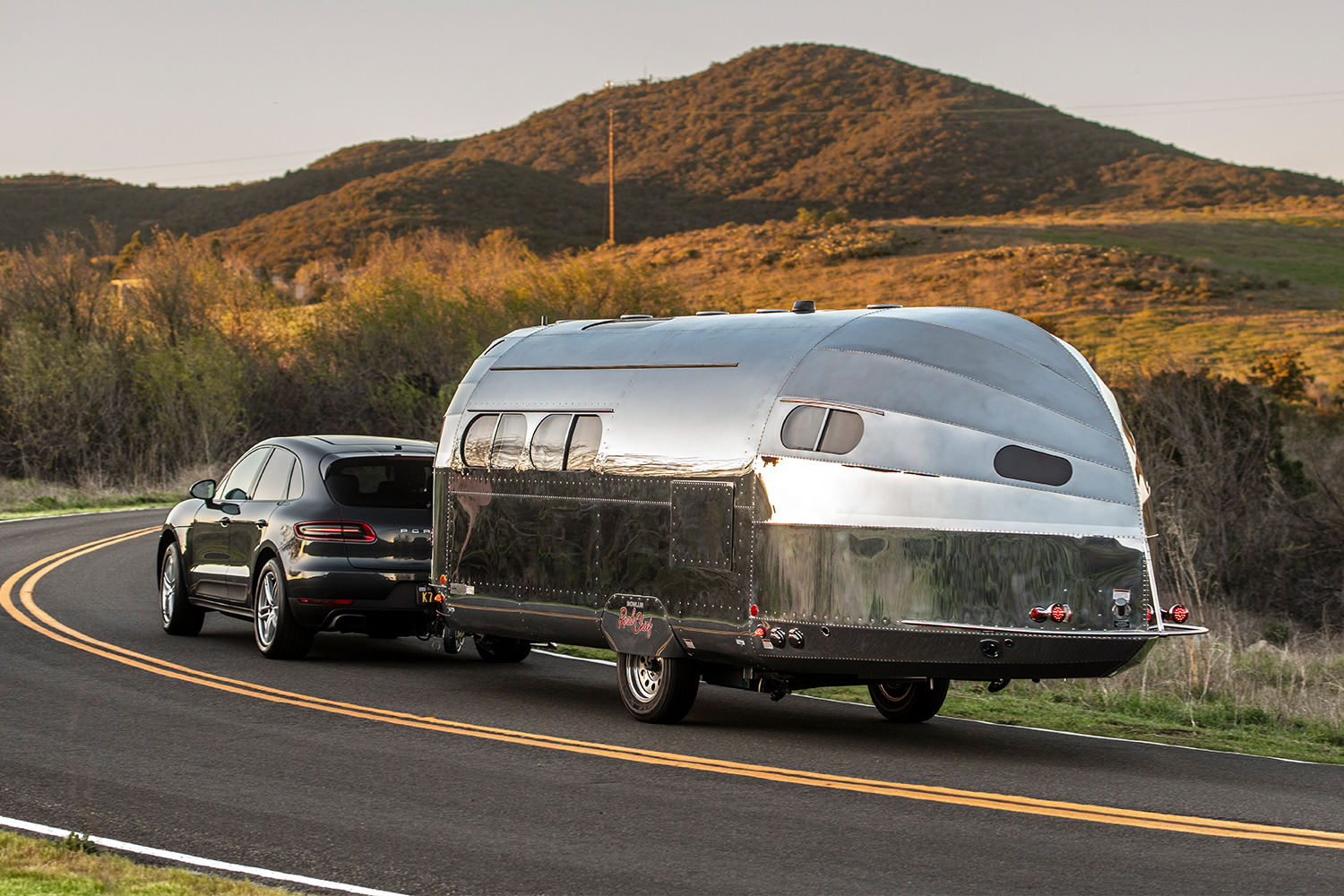Last week was a big one for the RV world. Winnebago, the first name in recreational vehicles, announced the e-RV, an all-electric motorhome with all the fixings and 125 miles of range, and Airstream, the first name in travel trailers, announced the eStream, a classically designed silver bullet with an electric drivetrain to make it easier to tow with EVs. (Their parent company Thor Industries also announced their own electric RV, the Thor Vision Vehicle, with a targeted range of 300 miles.) The future of zero-emissions American road-tripping seemed to be arriving.
Unfortunately, despite the hullabaloo surrounding these debuts at the 2022 Florida RV SuperShow, all three of these vehicles are only concepts. Are these RV leaders serious about bringing these electrified models to production? It certainly seems so, but none of them have set prices or production dates. It all begs the question: when are Americans actually going to be able to buy zero-emission RVs?
On Winnebago’s end, the company notes that the e-RV has already been in development for two years under the brand’s Advanced Technology Group arm. While the concept was met with excitement, some also worried that 125 miles of range is too low for a vehicle that’s meant to roam from state to state. In that regard, Winnebago said, “Evolving battery technology and applications continue to drive capabilities and mileage range increases are anticipated as the concept vehicle further develops.” So it’s possible they’re building hype with this unveiling while working on upping the range for a production model. As it stands, the e-RV is based on a Ford Transit platform but features an electrified drivetrain courtesy of Lightning eMotors.

Thor is taking two different routes with the Airstream eStream and its own Vision Vehicle. The former is built on the company’s “exclusive high-voltage electric chassis” while the Vision Vehicle is also based on a Ford Transit van but with chassis help from Roush and a unique combination of “a high-voltage battery pack and an integrated fuel cell.” “We’ve been focused on an electrification ‘eMobility’ strategy for a number of years and have made substantial progress on our journey,” said Thor CEO Bob Martin. But that journey is not yet over.
The problems with electric RV are obvious. By definition, RVs are built for traveling long distances, not just puttering around town or to and from work, so buyers will expect longer range capacities than electric cars and SUVs. But due to the heavier nature of these vehicles (and the added gear travelers bring along), it’s harder to achieve big range numbers. And anecdotally, I know some people have found the charging experience frustrating when trying to tow trailers with EVs due to how some charging stations are configured, so that’s something that will need to be taken into consideration.

A few other companies have been exploring this space for the U.S. market as well. Volkswagen will reveal its highly anticipated ID.Buzz van in March, which will be getting a camper version that may or may not come Stateside (if it doesn’t, you can at least expect third-party conversions). And last August, SylvanSport said it was working with Zeus Electric Chassis on a line of all-electric RVs that will launch later this year. Europe apparently has at least one real electric motorhome, but here in the U.S. it’s all TBD.
Tesla showed that the first company to truly crack the EV problem — showing people that cars could be better for the planet while still being covetable and practical — could receive a serious windfall. With these three recent announcements, the race is finally on for the first company to crack the electric RV problem.
Thanks for reading InsideHook. Sign up for our daily newsletter and be in the know.

















